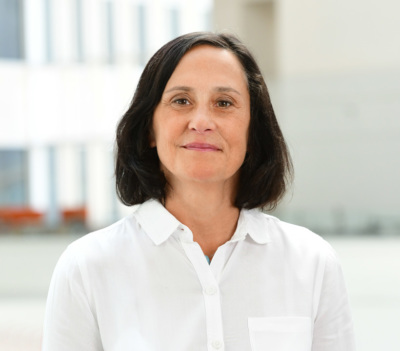No fooling: Connecticut students flag falsehoods, embrace evidence


Shea Haslam, a ninth-grader at The Morgan School in Clinton, Connecticut, works on a Checkology lesson in her journalism class. Photo by Meredith Whitefield for the News Literacy Project.
Rumormongers and perpetrators of hoaxes online work hard to deceive people, but they are no match for the journalism students at The Morgan School, a public high school in Clinton, Connecticut.
Their teacher, Leslie Chausse, uses the News Literacy Project’s Checkology® virtual classroom to develop their critical-thinking skills and hone their journalism chops.
“There is so much information to sort through online. It’s hard,” said Chausse, whose 25 years of teaching experience includes 13 at The Morgan School. “I like that Checkology helps them to do that. It gives them a greater awareness of what they are hearing and reading, and they question it more.”
Every day, she said, “they take what they are learning and apply it.”
Verification tools
Recently, in connection with the Checkology lesson “Arguments & Evidence,” her students examined real social media posts to determine their credibility. They used digital verification tools, such as reverse image searches, before deciding whether the claims made in the posts were supported by strong evidence, some evidence, no evidence or not enough evidence to decide. They then explained how they made their decisions.
The first post they examined featured a photo of a “Forest in Poland [with] 400 pine trees all growing at a 90-degree angle facing north, and nobody knows why.” The students were asked if there was sufficient evidence to support the post’s assertion that there is no way to explain why the trees grow that way — and were immediately skeptical.
“There is only one picture, not multiple ones, and the trees in the background look straight,” said senior Isabella Mongillo.
A classmate suggested that the trees (whose bases were pictured growing in a sideways U curve before eventually straightening up) might have been manipulated with photo editing software. Using Google’s reverse image search, several students found the photo but no additional images or supporting text. A search on Snopes.com turned up no information to verify or debunk the post.
Not enough evidence
After some discussion, students decided that there was not enough evidence to judge the post as credible. As students followed along on laptops, Chausse clicked to the next screen (displayed on a large whiteboard), which revealed that while the photo was indeed real, the students were correct in determining that the post offered no evidence to support its claim that no one knows why the trees grow that way.
As the students moved from one post to the next, they regarded images and text with skepticism, looking for clues to credibility within each photo — including where and when it was taken — and searching for verification of text from multiple sources.
“What’s the point of this?” Chausse asked as her students closed their laptops and grabbed their backpacks at the end of class. “Check your sources. Make sure you are careful about what you are looking at online.”
Habits for life
She said her students put the skills they have learned in Checkology to use as they report on school news for The Pawprint, the school’s online newspaper, and manage the school’s social media platforms.
“It’s definitely opened my eyes a little more,” John Inglis, a senior who writes for The Pawprint, said of Checkology. “It makes me want to make sure information is right. I’ve learned how to do that better and do my own research.”
Chausse said the lesson on social media platforms’ use of algorithms to filter what we see online really resonated with her students. They also have gained an awareness of the larger impact of misinformation on society.
“That’s really important,” she said. “They see what is out there and how it is shaping our country, and they understand the repercussions. They can see it in how people vote.”
‘Don’t be a sheep’
John has advice for anyone navigating today’s complex information landscape: “Don’t be a sheep. Don’t believe everything you read or see.”
Isabella also helps her mother to vet what she sees online. “I look at things with her, check it with her. I look for something reliable,” she said.
These classmates also aren’t shy about correcting anyone who shares misinformation. “If I see something that’s blatantly incorrect and false, I’ll give them the facts,” John said.
Their actions are evidence that these students aren’t simply outsmarting the purveyors of misinformation; they’re actively joining the fight for facts.
